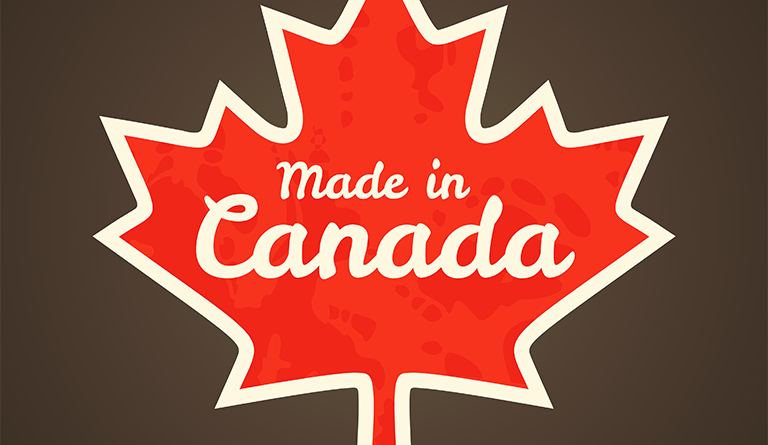Canadian Grocers Cut US Products as Trade Tensions Rise
Subscribe to our free newsletter today to keep up-to-date with the latest manufacturing news.
In response to escalating tariffs and economic policies perceived as unfavorable, Canadian grocery stores are reducing their reliance on American-made products. Consumers, driven by a mix of nationalism and economic pragmatism, are increasingly favoring homegrown goods.
Trade Disputes Fuel Retail Shifts
The current wave of Canadian consumer and retailer pushback stems from ongoing trade disputes with the United States. These tensions have been fueled by protectionist policies and retaliatory tariffs implemented by both governments.
Major grocery chains in Canada, including Sobeys Inc. and Metro Inc., have taken decisive steps to prioritize local products over American imports. In response to growing consumer demand for homegrown goods, these retailers have adjusted their supply chains, dedicating more shelf space to Canadian-made alternatives.
The Economic and Social Impact of Buying Canadian
Many Canadians view supporting domestic products as a way to strengthen their economy and reduce dependency on U.S. goods. Retailers have capitalized on this sentiment, launching marketing campaigns that highlight the benefits of buying Canadian.
Beyond national pride, supply chain stability is another driving factor. Recent disruptions caused by trade uncertainties and logistical challenges have made it more appealing for retailers to source locally.
Canadian consumers have been quick to embrace this shift, with surveys indicating that a growing number of shoppers actively seek out local products. Reports suggest that nearly 78% of Canadians are making a conscious effort to buy Canadian-made goods, while 59% express strong support for a boycott of U.S. products.
Social Media and the Growing Boycott Movement
Social media has played a crucial role in amplifying this movement. Hashtags such as #BuyCanadian and #SupportLocal have gained traction, reflecting a collective push toward economic self-sufficiency. Online communities and advocacy groups have encouraged consumers to be mindful of their purchasing decisions, leading to heightened awareness and participation. In addition to food and grocery items, the boycott has extended to other sectors, including clothing, electronics, and travel.
Economic Ramifications for U.S. Businesses
The boycott is already having tangible effects on American businesses, particularly in the agricultural sector. The U.S. exports billions of dollars’ worth of food products to Canada annually, making it one of its largest trading partners. With Canadian retailers and consumers shifting away from U.S. goods, many American farmers and food producers are experiencing a decline in sales.
Reports indicate that small and medium-sized businesses are among the hardest hit. Companies that once relied on strong Canadian demand for their products are now facing declining revenues and excess inventory. Some have attempted to counteract this by offering discounts or marketing directly to Canadian consumers, but the movement against U.S. goods remains strong.
Beyond agriculture, the impact extends to manufacturing and retail, with American brands losing shelf space in major Canadian stores. The longer the trade tensions persist, the greater the strain on cross-border commerce, potentially leading to layoffs and financial losses for U.S. businesses.
Future Outlook on Canada-U.S. Trade Relations
Experts suggest that the longevity of this movement depends on several factors, including potential policy changes, diplomatic negotiations, and consumer sentiment over time. If trade relations improve, it is possible that Canadian retailers and consumers will reintegrate American products into their purchasing habits. However, if tensions continue, the divide may become a long-term fixture in North American trade dynamics.
The OECD’s recent forecast underscores the detrimental impact of escalating trade tensions initiated by President Donald Trump’s tariff hikes. By increasing tariffs by an additional 25 percentage points on nearly all imports from Canada and Mexico starting in April, the OECD projects a significant slowdown in economic growth for all three nations. Specifically, U.S. growth is expected to decelerate to 2.2% this year and further to 1.6% in 2026.
The ramifications extend beyond North America, as these protectionist measures are anticipated to dampen global business investment and elevate inflation. This scenario could compel central banks to maintain higher interest rates longer than previously anticipated, potentially stifling economic momentum worldwide. The OECD’s revised global growth projections now stand at 3.1% for this year and 3.0% for the next, down from the earlier estimate of 3.3%.
Sources:
